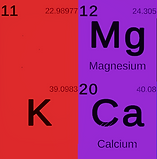
The Power of Games in Education
Games in education can boost engagement, support critical thinking, and make learning more interactive and fun. Helping students to retain knowledge and develop key skills through active participation.
Chemistry Game
Educational Chemistry game based on the Periodic Table.
The game revolves around the periodic table, using knowledge from National 5 and Higher Chemistry to solve related puzzles and fill in the missing elements to complete the table.
Educational games can provide an interactive way for students to:
-
Learn and retain knowledge
-
Practice skills in real-time
-
Strengthen critical thinking and problem-solving
-
Build teamwork and communication

Built using
Language: C#
Game engine: Unity
Table tile
The periodic table is composed of 118 tiles, one for each element. These tiles are created in a script. Each tile shows information for it's element, such as, the symbol, atomic number, etc. any of which can be hidden separately and revealed by solving specific puzzles.

Equation Puzzle
The player is given an incomplete balanced equation. Using the periodic table and button panel, they can input the correct number of elements based on knowledge from National 5 and Higher Chemistry. Once the equation is completed, it will change colour, and an element in the table will become visible.

In Unity, the equations are entered through the inspector, allowing a developer to customise how many and which parts are blanked out. A script then generates all the required game objects and components for display and user interaction.
.png)
Electron Arrangement
A 3D representation of an elements electron levels can be generated (for the first 20 elements) with only the name, symbol or atomic number of an element.
To do this, the first four electron shells, represented by thin rings, are created around the nucleus (in the centre). Electrons are then added to each shell in the correct order.

This could be turned into a puzzle, by having the player select which element the electron arrangement belongs to, such as the one for Calcium shown above. Alternatively, the player could be given an element that they have to make the arrangement for, by adding the correct number of electrons to each shell.
Future work
For further work to the game, I would like to add more puzzles and to randomise the elements and equations used.
Examples of puzzles could include:
-
An object in the scene that is made of the blank element that can be inserted into the right tile, e.g. a gold ring for Au, coal for Carbon
-
Calculating the correct atomic mass based on the number of protons and neutrons in an element
-
Identifying the correct element based on flame colours, this could be added in a mini game form
Randomising could be added by using a script that changes the elements blanked out, or by selecting a random puzzle from a pre created list, for example, creating multiple different equations and selecting two or three to use during the game.
Code